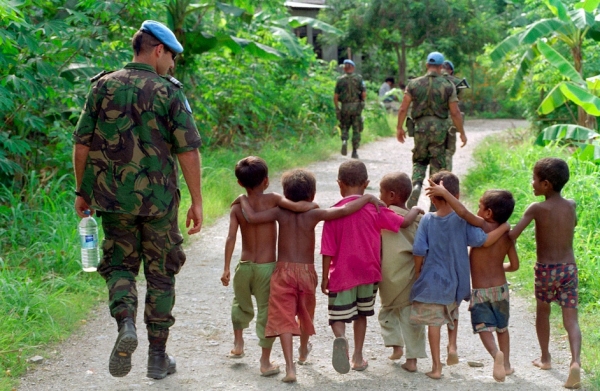In October, the Center for Civilians in Conflict (CIVIC) released the report “Closing the Gap: Implementation of Protection of Civilians Policies”. National policies for the protection of civilians (POC) are the device that translates support to civilians into concrete actions for their protection in war scenarios. However, little has been analysed on the actual implementation of POC policies. The report focuses, therefore, on how support for such policies is created, what factors are to be considered during implementation and how to ensure that they will have the desired effect.
First of all, it is necessary to think about policies that can engage the different stakeholders in the decision-making process, especially the government and security bodies. Presenting wide-ranging benefits, especially at the strategic and reputational level, is crucial. To this end, CIVIC recommends promoting effective communication, drafting assistance and coordination led by an advocacy champion within the institutions capable of conveying the importance of these policies, including their strategic one. The need to outline and highlight specific government commitments remains critical. However, these policies’ basic formulation must take into account pre-existing state concerns about them.
These concerns can range from the limitation of military action and the strategic advantage it gives the opponent to the serious violations and war crimes that widespread control of state action could expose, staining the government's image. To overcome these obstacles, it is necessary to highlight how reputational advantages can offset the disadvantages of POC. The advantages range from a more cooperative relationship with local communities to the potential for a more positive image to bring greater economic and strategic support from the international community.
Based on how reluctant the government is and how successful advocacy has been, multiple implementation contexts can emerge. Contextual action remains essential, but there are some common traits. The first type of implementation that can emerge is the administrative one, where there has been little to no resistance and commitments have been clearly outlined in a broad and direct language. In this case, the action still needs to be taken with the same strength. If the commitment remains clear but there is political friction inside or outside the government, the focus should be on highlighting the political consequences in case of inaction. When an implementation is experimental, a thorough analysis of who is pursuing these policies and what is needed to ensure their success is crucial. Finally, if a government is leaning towards a purely symbolic implementation, the emergence of local coalitions from civil society is key to ensuring their correct and transparent execution. This has been observed in the deployment of national action plans linked to the Security Council's Women, Peace and Security Resolution in the field of peacebuilding.
The report shows that the best way to ensure effective translation of Civil Protection commitments is through a comprehensive policy combined with a detailed and precise implementation plan. This plan must, therefore, clearly outline the roles, authorities and responsibilities of the different actors. The implementation modalities must be specific and have the necessary resources and staff allocated. Besides, a framework capable of assessing the effective and appropriate execution of the plan is necessary to ensure the implementation of the commitment made. In parallel, the exchange of good practices and standards at the international level should be encouraged and normalised to enable increasingly localised and effective action. Thus, the final result must be a virtuous circle of inward transmission and outward reception.
Adequate structuring and stakeholder participation are essential to ensure that these policies close the gap between commitment and implementation, making them the first but necessary step to ensure the involvement of the various actors and a change in their belligerent behaviour.
To read more, please visit:
https://civiliansinconflict.org/wp-content/uploads/2020/10/POC-Brief.pdf
Author: Matteo Consiglio; Editor: Margherita Curti







